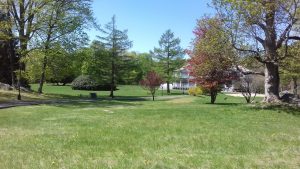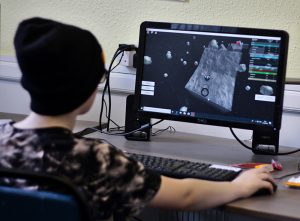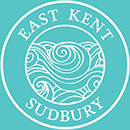Click the links to skip down to the following sections:
Organisation, Discipline and safety
About the project
Are you a school?
No. We are a part-time learning community for Electively Home Educated children, supplementing the learning taking place at home and elsewhere. Whilst much learning takes place at EK Sudbury, the responsibility for providing a full-time education remains with the parents.
What is the ethos behind your setting?
We are a self-directed democratic learning community based on the Sudbury Model. Self-directed means that children will have complete freedom over how they spend their time, what interests they pursue, what they learn and how they learn it. Democratic means that all students and staff together form the community which is responsible for making all decisions regarding its own organisation and each member of the community has an equal vote regardless of age or any other factor.
Why the Sudbury model?

When deciding what kind of setting we wanted to create our founding group knew we wanted a school that gave students complete freedom to self-direct their learning and a genuine say in all matters regarding the running of the community. Sudbury Valley School in Framingham, Massachusetts, was founded in 1968 and is still running and thriving today and was a huge inspiration to all of us in starting this project. Sudbury Valley School catalogued the organisation and philosophy of their school through many books, handbooks and other media from which many other schools in the US and around the world have been founded. Rather than re-invent a new model from scratch it made sense to us all to base our project on the Sudbury model whilst ensuring we meet our local regulatory requirements.
Where is the project located?
We are located on a beautiful site called Rippledown House in Ringwould, Deal. Find out more on our location page.
How is the project paid for?
As an independent organisation, we receive no funding from the Government or outside bodies, our provision is paid for entirely by fees from parents and donations. This means we are not taking any funds from the local community, in line with our democratic ethos the project is paid for by those that benefit from it.
Organisation, Discipline and Safety
How does the community organise itself?
All decisions about the running of the community are taken in the weekly meeting. Decisions will be made here on matters like expenditure, staff recruitment, excursions and the community’s rules or laws are written here. A chairperson is appointed to run the meeting and maintain order and this could be a staff member or student.
If kids are free to do what they like won’t it just be chaos?
With freedom comes responsibility. Whilst children are free to use their time at East Kent Sudbury how they wish they are not free to infringe upon the rights and peace of anyone else in the community. If you alone are responsible for your choices and actions then you alone are to be held accountable for those actions, any students breaking community rules and causing an infringement on others are held to account by the Judicial Committee.
How does the Judicial Committee work?
If someone breaks a rule or is believed to have infringed on the rights of another or the community as a whole a concern is reported. (This is quite a simple form. Students not yet able to write can ask someone to scribe for them.) Anyone can be included in a report, staff are not exempt. The Judicial Committee or JC, which is a mixed-age panel selected from the community members each week, meets daily and works through the reports. The persons involved are called, details checked, and all sides are heard. Once the facts have been established the panel and the people involved work together to agree an outcome that will help everyone move on. Often just talking about it will be enough, now everyone can see the other’s point of view they understand where they went wrong and won’t make the same mistake again. Other times it will be appropriate to do something to repair the damage caused by their actions, but it’s important everyone agrees the outcome is fair, reasonable and will help the member keep within the rules in the future. This may seem laborious but the whole community takes it seriously and it is an extremely effective way to sort out issues.
Does everything have to go through the JC?
Not at all. And in a community where issues are dealt with fairly and openly and students have to practise at resolving issues in this way, many problems are simply dealt with informally between students with no complaint necessary.
What about bullying?
Bullying can occur in any context, what makes a Sudbury setting different is how it deals with it. Because discipline and safety is managed by the community as a whole not by adults in charge there should be no shame attached to being brought up or to reporting an incident. Being brought up is not a judgement on the person, merely the community saying ‘we don’t approve of your actions’. Because the whole community shares the responsibility, acts of harassment are strongly disapproved of and dealt with quickly before it can become continuous bullying.
Is it safe to have young children mixing with teens?
Age-mixing is one of the most natural things for kids to do. Younger children look up to and enjoy being nurtured by older children, and older children learn care-taking of the little ones, as well as enjoying an extended childhood of free play. We take safeguarding extremely seriously and as such our community has rules to guide students when mixing across wide age gaps as to what behaviour is appropriate. Not only do we believe age-mixing is safe, it is one of the key ingredients that make our model so successful.
Learning
If they can do anything all day, does that mean my child will do nothing but…

We trust students to make their own choices and to learn from those choices. Any interest or activity, provided it’s within the laws of the community, are considered worthy and equal. We do not have a hierarchy of subjects with academics at the top, craftsmanship and arts in the middle and play or hobbies at the bottom. We recognise that learning can come from any interest and often happens as a by-product rather than as the goal. So yes a child could spend the whole day playing outside, on a computer game, reading, chatting or just about any other activity you can think of. Many parents worry about their children becoming obsessed with just one thing and spending all their time on that. Traditional schools talk about having a balanced educational diet and this is a hard concept to let go of. The Sudbury model sees that in any pursuit there is more than just one thing being learnt, playing a video game may involve teamwork, problem-solving, map reading, quick reflexes, memory skills, reading instructions, and making mathematical calculations; these things are no less valid because of the context. In fact, because the child is using these skills to solve real problems they are more valid than a hypothetical scenario laid out in a textbook.
However, that all being said, because of the nature of the setting the student would not be doing one thing all day in isolation. There would be many other students around them following other interests and carrying out different projects which the child would be exposed to. So it is far less likely than if the child were following their interest at home, alone, that they will not also embrace other interests at some point.
If there is no standard curriculum how will my child learn “the basics”?
Skills such as reading, writing and numeracy that we consider essential for success in the modern world are learnt easily when children are directing their own learning and play precisely because they are essential, these skills occur all the time. Spending pocket money at the shop, bartering sandwiches for chocolate biscuits, who climbed highest in the tree? What’s on the notice board this week? Did we have enough votes for a majority? Completing a complaint form for the Judicial Committee, writing out a proposal for a field trip, if 10 people want to make a gingerbread house how much flour do we need to buy and so on. Children become more proficient through reading, writing and using numbers in real life situations to solve real problems. This kind of informal learning is notoriously hard to see and measure, it requires a great deal of trust on the part of the adult that learning is taking place.
Sometimes a particular child may become frustrated that their ambition outstrips their current skill level. This frustration often provides the motivation for a burst of intensive goal driven learning. They may utilise traditional course books or request lessons at this point or find their own way. When the learner is ready the skill is acquired relatively quickly and easily compared with the years it would be expected to take in a traditional classroom.
If activities aren’t offered by staff how do students discover new things?
Turn the question around for a second and forget we’re talking about children. How do you discover new things? The internet, TV, magazines, books, a friend, a poster, something you witness first hand. Sometimes we can’t even trace where we first heard about something. In such an information-rich world can you really imagine not knowing about the various forms of art, music, food, language, sport and millions of other things that are of interest in the world?
Our students are just like you only they’ve been born into this information-rich age. They are digital natives, finding things out is what they do best. Add to that a rich environment packed with books and resources, an empowering democratic system that gives them the agency to make things happen and top it off with a busy social life mixing with others of all ages, backgrounds and diverse interests – and now ask yourself how they will discover wet felting, or Spanish or free jazz. Our students don’t need us to put these things before them they are more than capable of finding them out for themselves.
“Every time we teach a child something, we keep him from inventing it himself. On the other hand, that which we allow him to discover for himself will remain with him visible for the rest of his life. ” – Jean Piaget
More on this questions here on our blog.
How do you cater for children with Special Educational Needs?
We have an open admissions policy, anyone is welcome to apply. The model works very well for a wide range of children with a wide range of needs. In fact, for many reasons the setting will be far more suitable than a traditional setting for many with additional needs. Children are free to learn how they wish, for example, there is no bias towards learning through text. Children will not be expected to meet specific milestones at specific ages so no one will be considered ‘behind’. No one will be packed into a crowded class room so children that struggle with sensory overload will have space to be on their own when they need it. Many of the stresses put upon children with special needs to behave like their neuro-typical counterparts will not be there, instead they can thrive in their own way.
However, the requirement to join our community is that you are capable and willing to take responsibility for your own actions. That you have a level of personal autonomy that keeps yourself and others safe. If a particular need/condition makes that an impossibility, then the community will not be a suitable setting for that child. In that instance we would be failing the child to suggest we could meet their needs. But every child wishing to apply will be considered and it will be through discussions between child, parents and admissions committee and through potential visiting days and a settling-in period that all concerned can assess whether indeed our setting is the right place for that individual.
How does the Sudbury model prepare students for their later lives?
Many studies have followed the lives of Sudbury graduates to see how their experience prepared them for their later careers and life as an adult and found that whether they had taken formal exams or not they “had no particular difficulties getting into colleges and universities” and that many “others have become successful in careers without going to college”. More importantly perhaps, “former students report that they are happy with their lives. They are almost unanimous in reporting that they are glad that they attended Sudbury Valley School and in believing that the school prepared them better than a traditional school would have for the realities of adult existence.”1
Students of Sudbury model settings have practice in making real decisions about their lives, they are responsible for their choices and as such are well prepared for the independence of adult life. Having the time to follow their interests, they often have a clearer idea of what they would like to pursue as a career compared to a student that has been given little choices over their learning. The community’s democracy prepares students for life as citizens within a democratic country, children will leave with an understanding of and respect for the processes of government and justice.
In our short 5 years we have already seen students prepare for moving on and further education and be successful in their ongoing pursuits.
